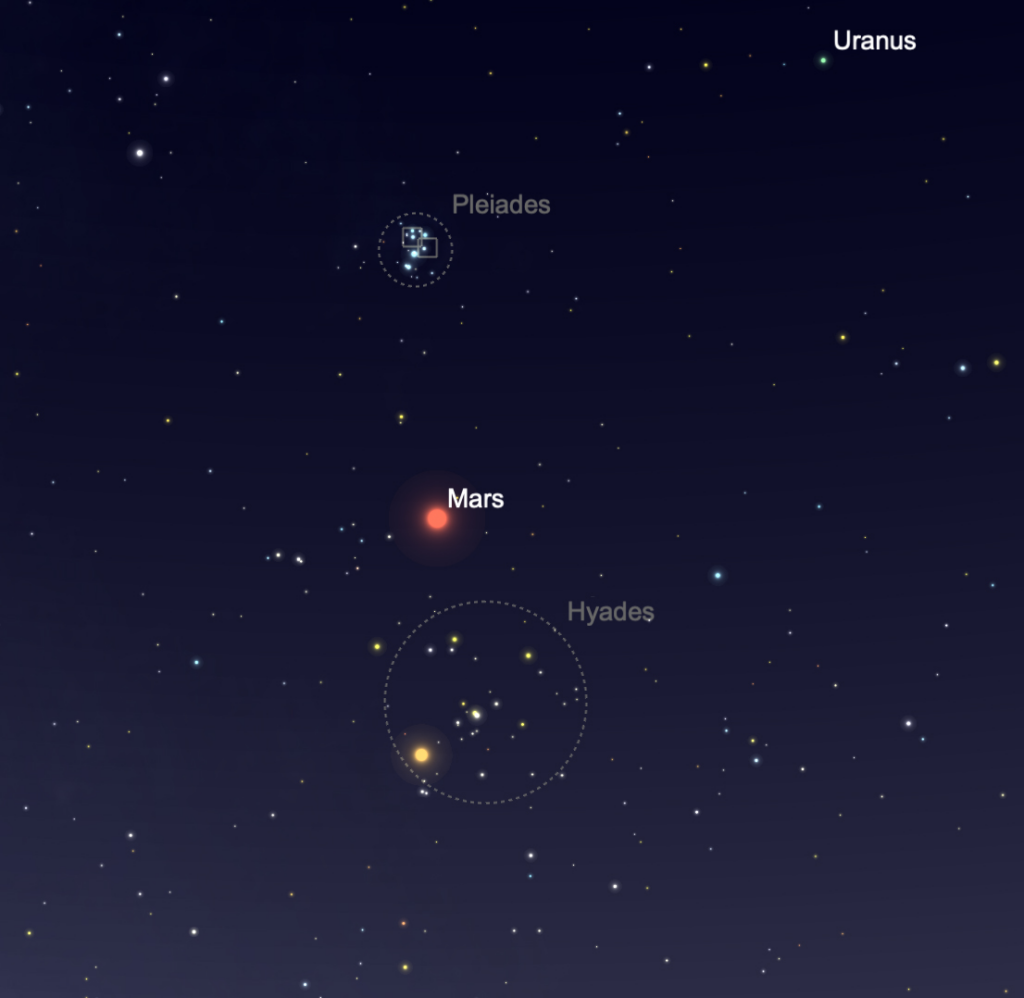Sky Report: August 29 – September 4

Graphic created with SkySafariAstronomy.com.
Starting in the evening with the planets, you might look for Mercury low in the west immediately after sunset but you probably won’t see it, it’s so low. I mention it for completeness. On the evening of the 29th it’s 7° below the thin crescent moon and you might look for it then. Have a dust-free sky and use binoculars.
The bright orange star next to the moon on the 2nd and 3rd is the giant star Antares in Scorpius, the Scorpion. On the 3rd, by the way, the First-Quarter moon is in the astronomical constellation Ophiuchus, the Healer or MD.
Saturn is low in the southeast as darkness falls and it’s almost halfway up the southern sky at midnight, and that’s the best time to see it through a telescope – when it’s higher than the thickest layers of our atmosphere which distort magnified images. Saturn rises 4 minutes earlier each night and the time when it’s at its highest advances by 4 minutes each night, so in a month it will be at its highest at about 10 p.m. That 4 minutes per day is true of Jupiter and Mars too.
Jupiter rises around 9 p.m. Saturn is brighter than any star out at the time (Mars too) but Jupiter is brighter than any star in the night sky.
Mars doesn’t rise until midnight and the best time to see it is just before dawn. Mars is midway between the bright Pleiades and Hyades star clusters in Taurus. It’s nearly in line with them all week. The Hyades is some 625 million years old (the stars in it were all born together at that time) and it’s 150 light years away, while the Pleiades is about 100 million years old (about the same age as the Rocky Mountains) and are 430 light years distant. The Pleiades looks smaller than the Hyades because: 1) it’s 3 times farther away, and 2) it actually is smaller, with a diameter of 8 light years vs. 18 for the Hyades. The stars of the Hyades, being older, have had more time to disperse. Eventually both clusters will “evaporate” as the stars drift away one-by-one. Before they disperse (in a few hundred million years) note with your binoculars or telescope that the young stars of the Pleiades are substantially bluer than the yellower stars of the Hyades, and the effect is quite noticeable when you stop to notice it. Blue stars are hot young stars with short life-spans and all the Hyades blue stars have died, leaving only the yellow ones. There is much to see in the sky if you know what to look for!
The last planet to appear is Venus, which now rises 70 minutes before the sun. That number drops to 30 minutes at the end of the month. Venus is moving around behind the sun and soon we’ll lose it to view, but rumor has it that it’ll return, to the evening sky, early next year.
Stellar Vista Observatory provides portable telescopes and tripod mounted binocular kits on loan for free to residents and visitors in Kane County. Enhance your enjoyment of the night sky! For details or to request a loan, visit https://stellarvistaobservatory.org/discover-the-night-sky/ or drop in to the Kane County Office of Tourism.
The Sky Report is presented as a public service by the Stellar Vista Observatory, a nonprofit organization based in Kanab, Utah, which provides opportunities for people to observe, appreciate, and comprehend our starry night sky. Additional information is at www.stellarvistaobservatory.org. Send questions and comments to John@StargazingAdventures.org.






Comments are closed.